We head to Germany for a traditional driven hunt to try out some cutting-edge gear
 credit: Dom H
credit: Dom H
A change is as good as a rest, so the saying goes. And it was with great pleasure that we swapped soggy old England for snow-covered German forests in pursuit of some driven game. But where we usually think of driven game as pheasants or partridge, the menu is a little heavier on the continent… here, we are after red deer, boar, mouflon, roe deer and predator game such as fox and raccoon.
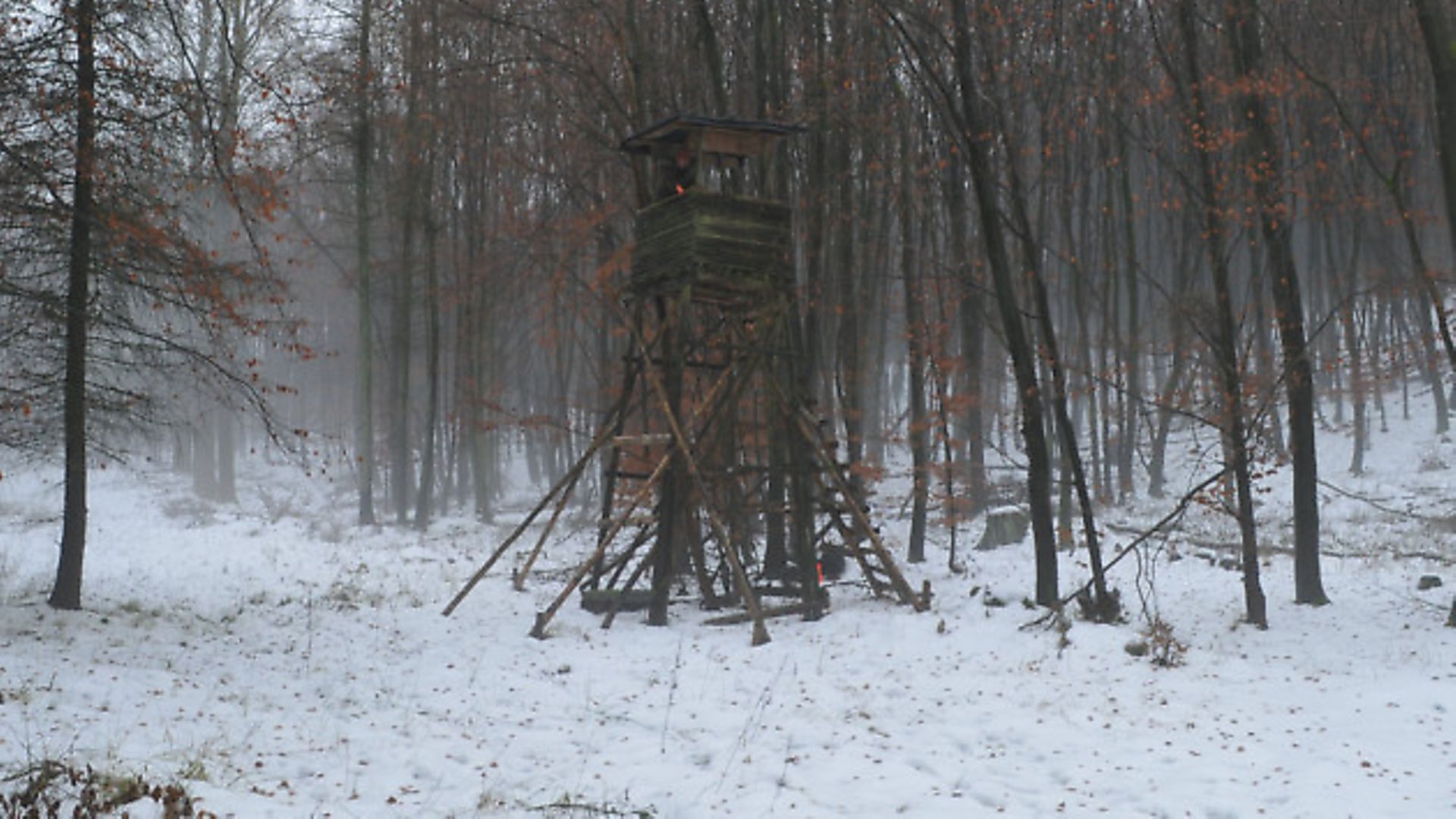 credit: Dom H
credit: Dom H
There are just two really big hunts per year in the Laubach forests – an area covering several thousand acres. We will have between 50 and 60 hunters, so the logistics of getting the Guns on their stands alone are seriously challenging.
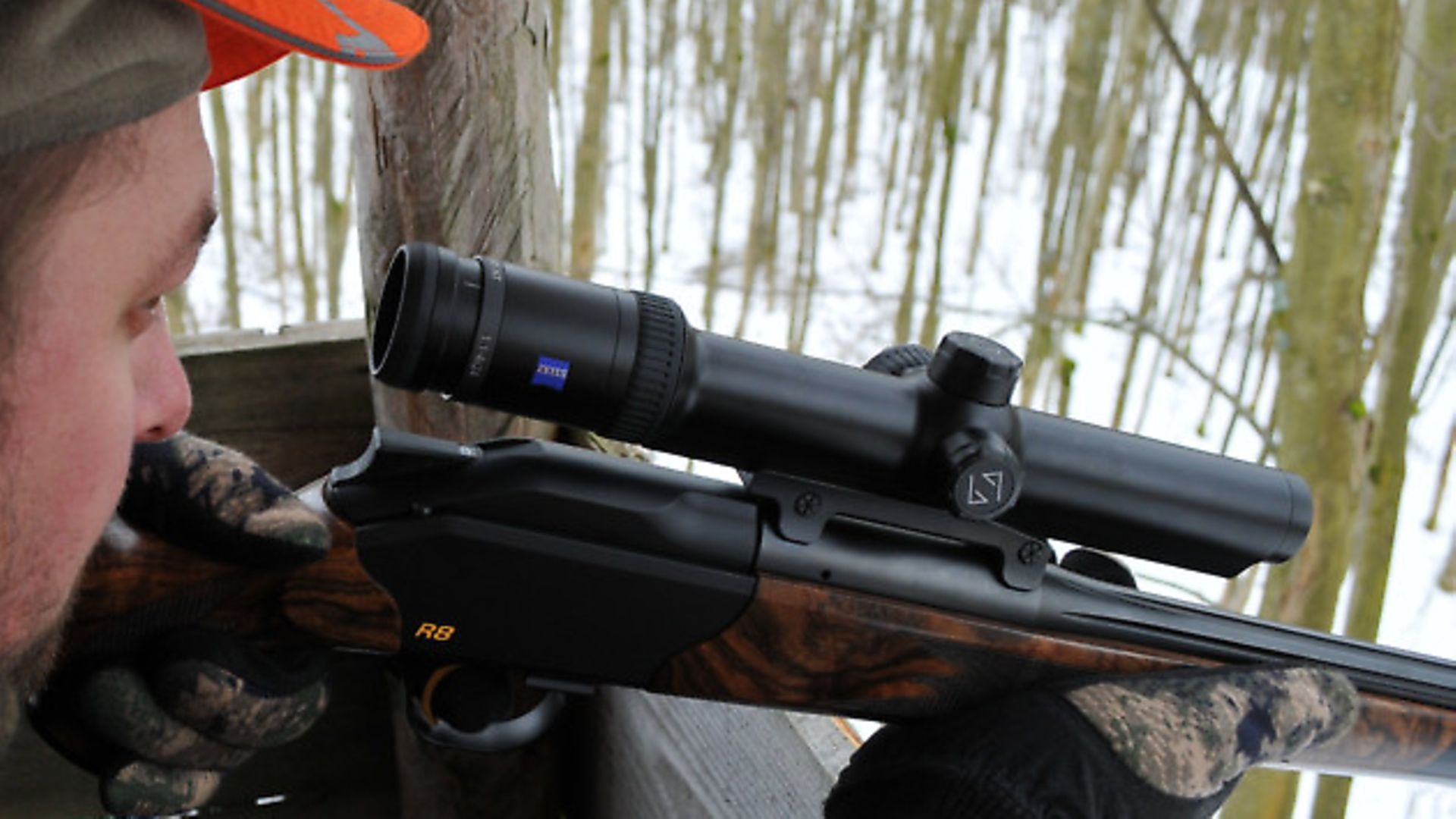 credit: Dom H
credit: Dom H
Our hunt chief, Rudiger Krato, gives us the rules of the day after the hunting horns call us to assemble. He talks through what animals are – and more importantly, aren’t – ok to shoot. Mouflon rams with more than half a turn of horn, leading wild boar sows with young at foot and red stags with crowns are all serious no-nos. Shoot one by mistake and you face serious financial punishment and you won’t even get the trophy to show for it.
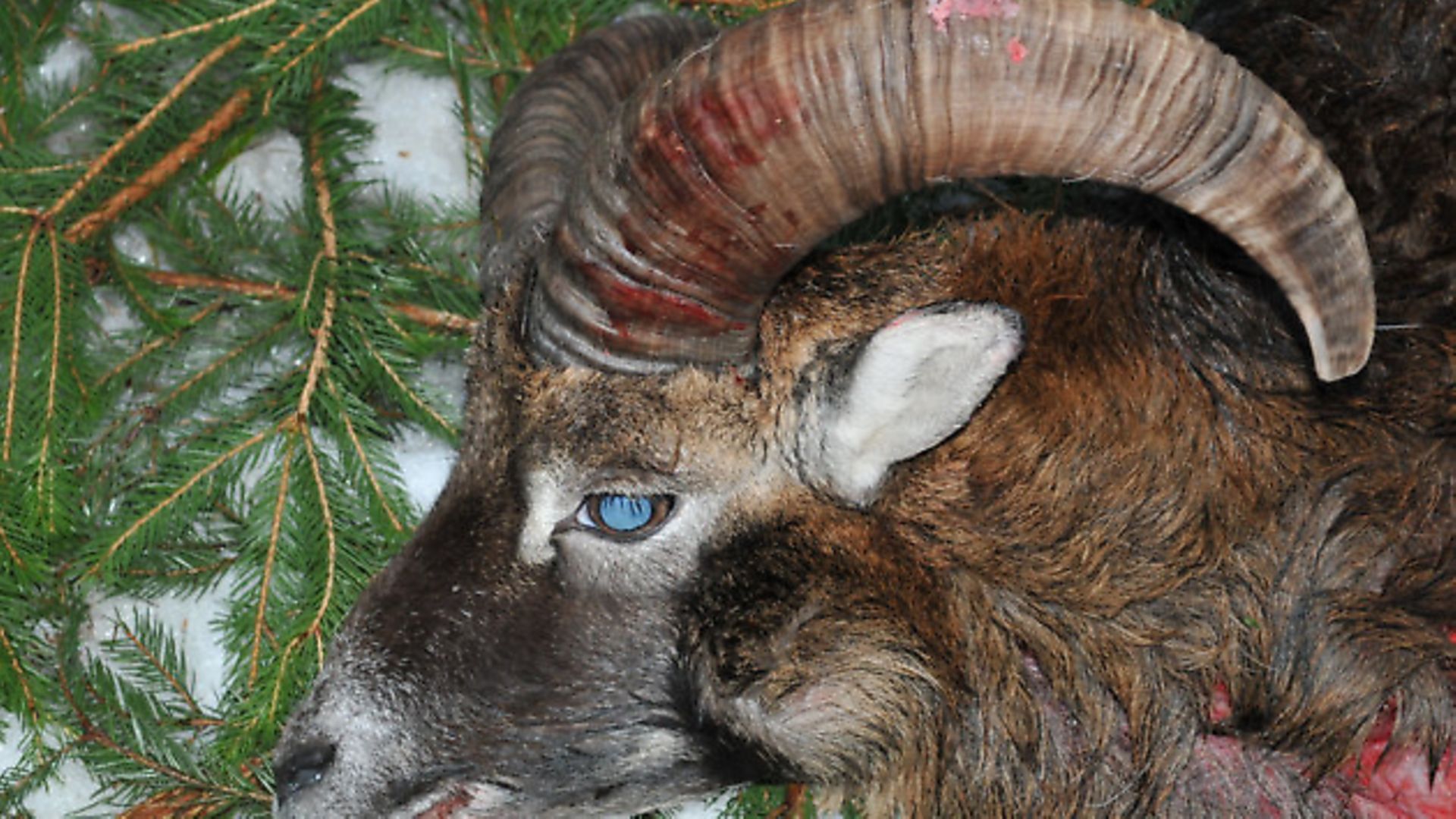 credit: Dom H
credit: Dom H
Rudiger has drafted in lots of helpers – experienced hunters who ferry us to our stands and make sure we know where our fields of fire are. Safety is paramount, of course, with about 20 beaters and 70 dogs on the ground and hunters spread all over the countryside.
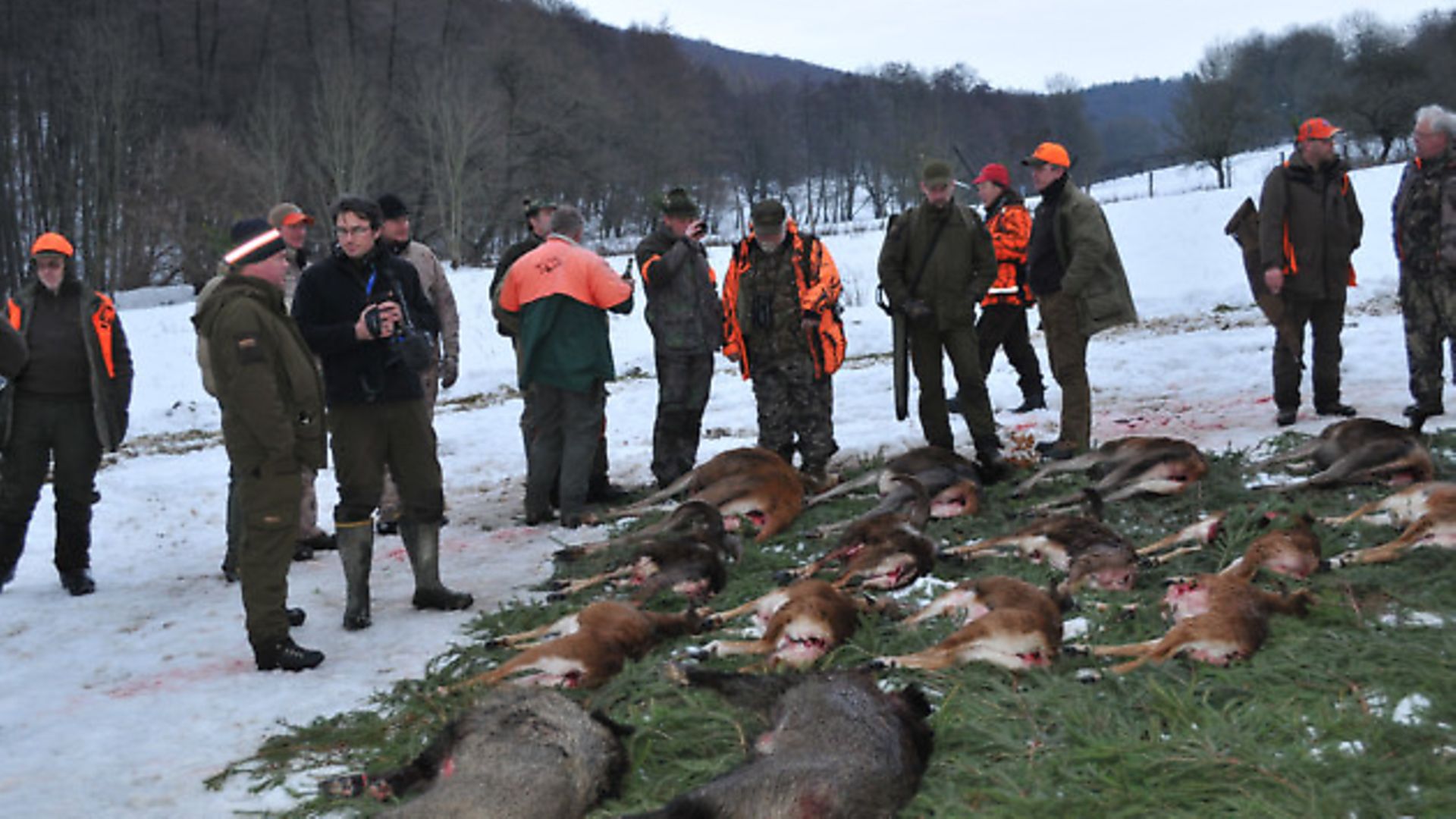 credit: Dom H
credit: Dom H
Stands range from a few feet off the ground to 30 feet high, and for most of us there is a 360 degree arc of fire. Once on the stand you are ‘live’ but cannot leave it until the end of the drive.
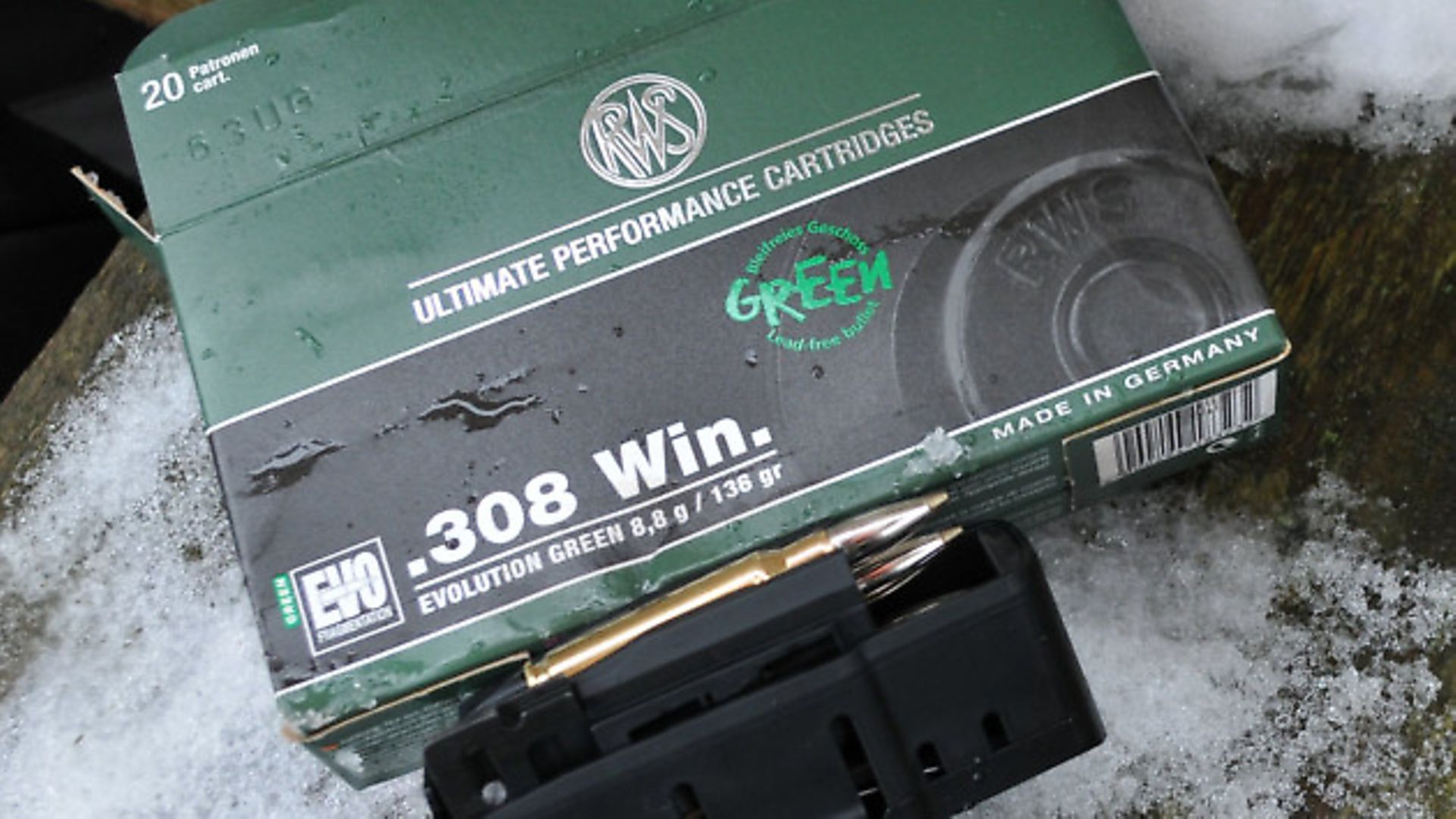 credit: Dom H
credit: Dom H
Our first hunting day is badly affected by the weather. There are between 12 and 20 inches of snow on the ground, which makes life very tough for the beaters and dogs. For driven hunting, short-legged dogs are preferred as they don’t chase the game and push it too hard. The downside is that a foot-and-a-half of snow is virtually over their heads!
The game itself is less keen to move in these conditions, preferring to sit tight. We see a roe deer lie up about 100 yards from our stand and not move until the dogs were 20 yards away from her. In fact, all we see are a few roe, most too far and too fast to consider a shot, with the added issue that the bucks have cast their antlers. Bucks are out of season, but identifying a doe unless she has her backside to you is tricky, and then she isn’t shootable anyway!
There are no boar to be seen either, despite making up a large portion of the bag last year. The harsh weather may have pushed them on to lower ground.
When we get back to base for the honouring of the game it is clear that red deer have been the most numerous quarry, though mouflon and roe deer have also been present.
Overnight temperatures rise dramatically and it rains heavily, clearing at dawn. The thick snow has been seriously reduced in depth which augurs well for the day’s hunting, as the dogs will find life easier and the game will be more likely to move.
My stand is a 25-foot tower with a broad ride running left to right and an area of cleared wood behind. There is a steep and heavily wooded ridge behind me, thick conifers to the back left and thick deciduous wood in front. It looks a very likely spot and there are plenty of fresh tracks in the snow as I make my way from the roadway and climb into the seat.
Within ten minutes I spot movement in front. A red hind. We have been told not to shoot lead hinds and the thick brush prevents a shot anyway. She looks as if she will break cover just 50 yards away but, as if sensing my presence, she vectors off and leads a group of six beasts, including a spiker, across the ride at an angle some 120 yards away. They are motoring, too, and although I try to swing through and get on the spiker, I’m not quick enough.
Heart hammering, my senses are on overload as a fox comes running through on my right side. I take a shot but miss by a mile. Time to calm down a bit.
Another fox emerges from behind and I have time to get into a comfy shooting position. At 60 yards I whistle and he looks up, pausing for a split second and that is time enough.
There is more movement behind – a big boar. It’s in heavy cover and I can’t tell if it’s male or female, but the fact it’s alone makes it a potential target. I track it through the trees but with the fog swirling and uncertain of a safe backstop, I elect to leave the boar alone.
My disappointment is short-lived as the third fox of the day comes sprinting straight towards the stand. Again I get a response to the whistle and the fox pauses on the edge of the cover of the trees, presenting a close-range shot. It runs a few yards and I take an insurance shot that stops it in its tracks.
The fog continues to swirl around, deadening the sound and opening and closing vistas through the trees. As visibility increases a smidge we spot our lone boar again, some 150 yards away and pressing on. I track its movement and have the briefest of windows for a shot as it strides across the ride but I am not confident about making a clean kill so leave it. A minute later a rifle barks from the next stand along and I can’t help a pang of envy – indeed my neighbouring Gun had bagged a fine boar, I later discover.
Soon after this we hear the dogs and beaters. They spot the foxes and offer us a ‘waidmann’s heil’ before heading off into the forest again. A moment later we hear a shout from one of them warning us that some red deer are approaching.
I get ready and see a hind followed by a calf and a fantastic stag with monster handlebars – crowns both sides! I opt to go for the calf and take the shot as they pass onto the ride. The calf reacts but suggests that the strike is a little far back and it runs off and out of sight.
Our last deer of the day emerges calmy and walks slowly by, almost directly beneath the stand. It would have been the easiest shot of the day but it is a roe buck so we salute him and let him melt away into the forest.
It is frustrating having to wait for the end of the drive but as soon as it finishes I head over to check for an outshot and find a good blood trail of dark blood, suggesting a liver strike. I mark the spot and by the time I have returned to the stand, tracker Klaus and his long-haired Weimaraner Paul are there checking if any animals need a follow-up. I show him the trail and they head off in pursuit.
By the time I have had a bite to eat back at our assembly point Klaus returns, looking slightly red in the face. Paul did the job and found the calf a few hundred yards further on. He confirmed my suspicions about my shot placement but the main thing is that the animal has been accounted for. It is difficult to get to terms with this type of shooting. I hate seeing animals run on and am wary of attempting a shot on a moving target. But that is the nature of driven hunting and you must remind yourself that the blood trackers and dogs are there for that very reason. Every single animal suspected of being hit was tracked and despatched before the end of the day and you have to accept that it is a different culture of hunting.
It is also, and I said this last year after I had been, incredibly exciting when game is in your area. You never know whether a big tusker or a mouflon will appear, or a herd of reds, or even a racoon dog. Game can appear at any time from any direction and the action can be fast and furious.
A driven hunt can be had for under £1,000 and if you split travel costs by using the Channel Tunnel and driving, it’s surprisingly accessible. Many thousands of people pay more than that for a day’s pheasant shooting so it’s easy to see why more and more British sportsmen are crossing the water and giving it a go. I would certainly recommend it.
The right stuff
Driven hunting is very different to traditional UK stalking and requires a bit of consideration as to what gear to use. You are frequently dealing with animals travelling at speed and at short ranges. That’s why double rifles are popular, with their fast handling and the option of a near instant follow-up shot. Blaser’s straight-pull rifles are also popular for similar reasons – fast shooting and with one in the chamber and four in the magazine, there’s plenty of firepower on hand, should a big group of boar turn up. We are using the R8 in .308 Winchester – about as small as you’d want to go with big reds and boar on the game card.
Optics also demand a different approach. Many people use open sights for maximum peripheral vision and fast target acquisition. Up to 60-70 yards, they are perfectly adequate. Red dot or ‘reflex’ sights are also increasingly popular, taking the advantages of the open sight and combining with increased accuracy.
The Zeiss Victory HT in 1.1-4x24 takes this multi-tasking to an even higher level. At 1.1x the image looks exactly as it would to the naked eye and with a huge exit pupil it allows for comfortable shooting both eyes open. Wind up to 4x and we were getting sub 1” groups on the range, which gave us the confidence to tackle longer shots in the forest if required.
Visit www.zeiss.co.uk and www.openseasonltd.co.uk
Cutting-edge ammo
RWS was a co-sponsor of this event and had provided its latest hunting bullet for us to use: the RWS Evolution Green. Green? That’ll be lead free. Whatever your own personal view on the lead bullet argument, there are parts of the world where it is now a legal requirement – including some German hunting grounds as of this January.
Traditionally, lead-free bullets have been made of copper alloy or brass alloy with either a ballistic tip or a hollow point construction. There have been some concerns regarding accuracy, while at longer ranges (and lower velocities) a lack of expansion has been problematic.
The Evolution Green looks to remedy these complaints. Its high-tech construction starts with a ballistic tip and barrel-friendly nickel plating. The nose section has a thin jacket with radial cuts for rapid expansion while the food-safe tin core is designed to fragment quite explosively, imparting high levels of energy.
The tail section is separated by a partial partition and features a thicker jacket and a stable rear core to give strong penetration and hopefully an exit wound.
We test fired lots of rounds on the range and recorded some fantastic groups even at 300 yards – certainly comparable with any factory ammo I have used in the past.
I’m not convinced it is ideal for driven hunting in heavy forest. The frangible nature of it makes even the slightest deflection from twig or leaf potentially problematic. But there is no doubting its accuracy, and feedback regarding knockdown performance was positive from the hunters on our trip.
It’s not cheap, at around £2.30 per bang, but if you are planning to hunt somewhere with a lead-free stipulation, the Evolution Green is as good as it gets.
Visit www.ruag.co.uk